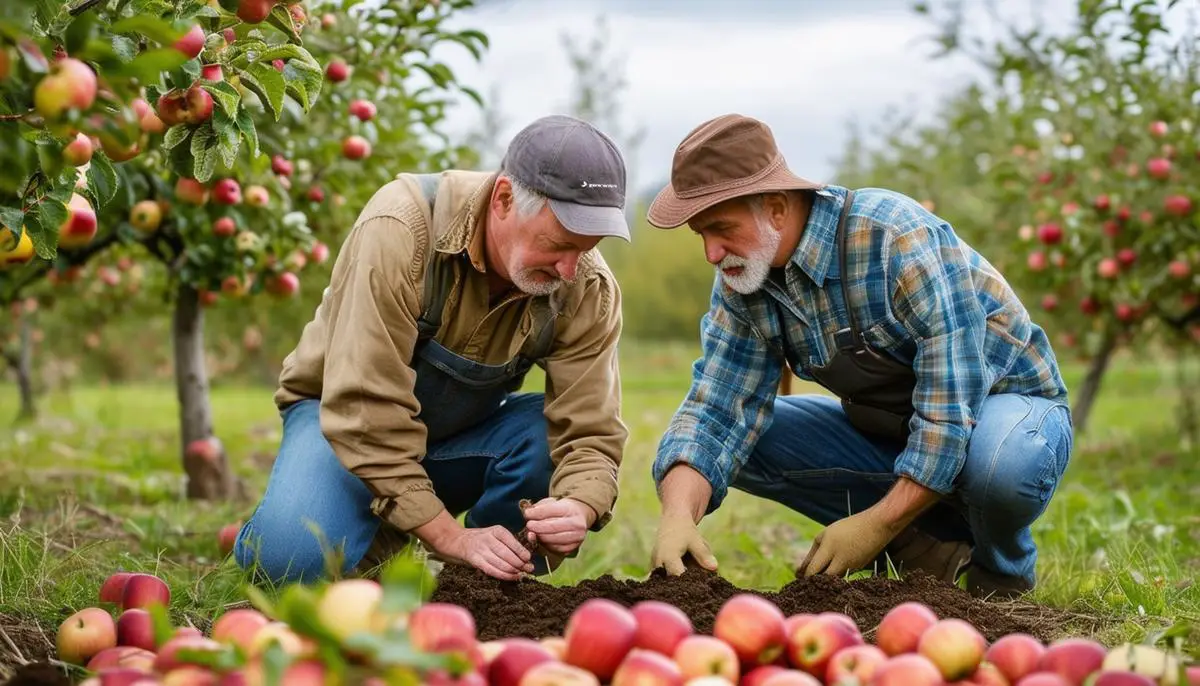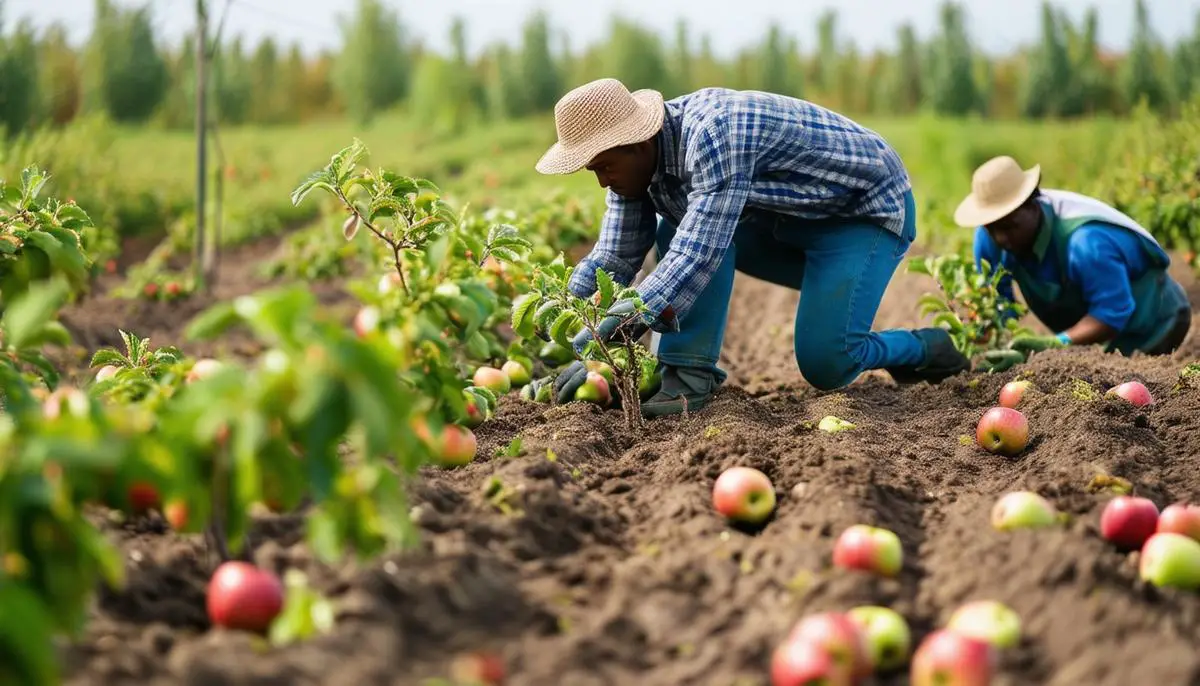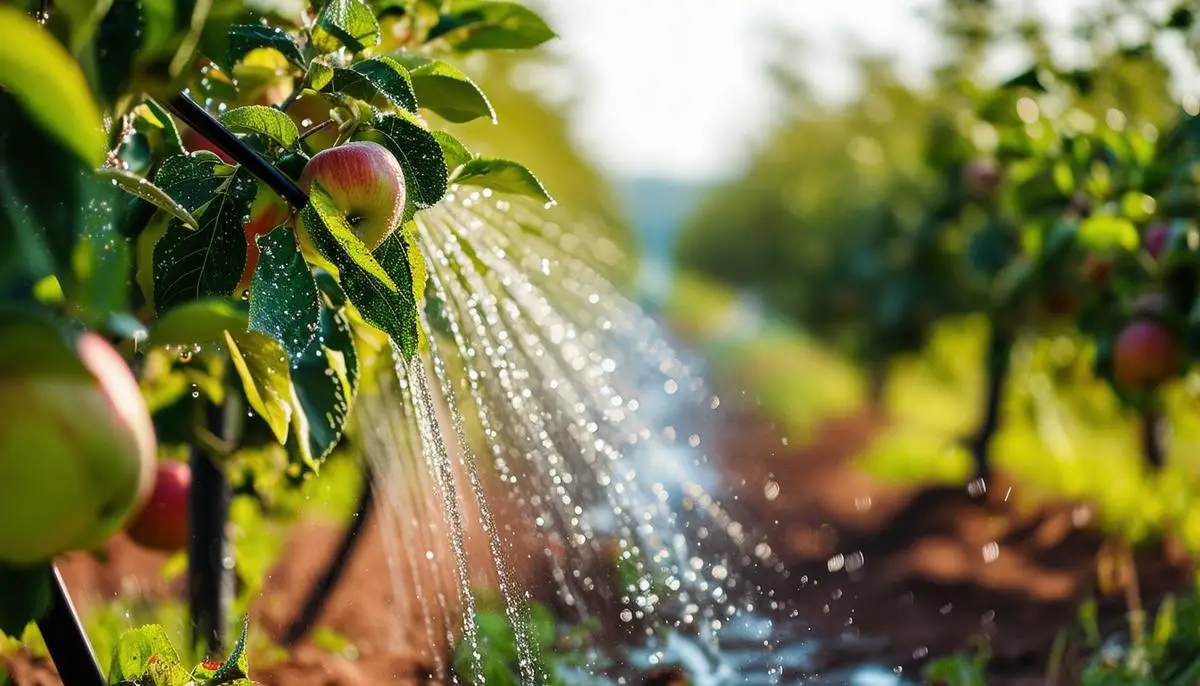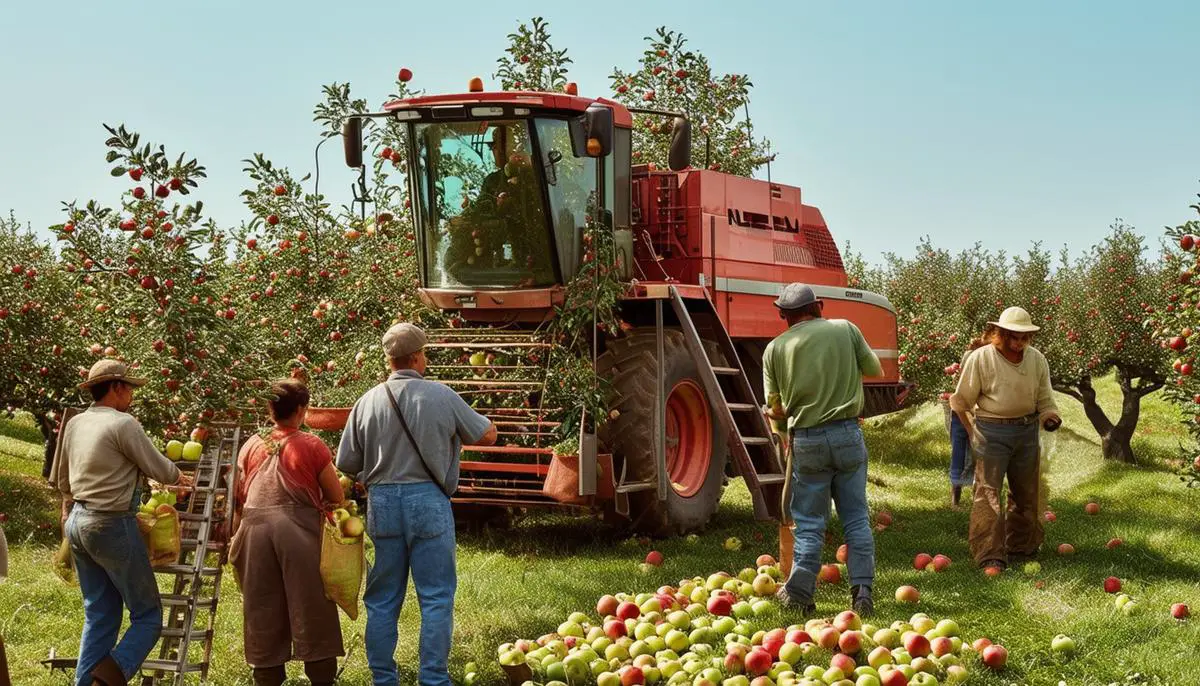Land Acquisition and Preparation
Land Acquisition
Land acquisition is the cornerstone of your apple empire. It's the pricey puzzle piece that decides if your orchard dreams become reality.
Average Cost Ranges
Land prices range dramatically, from $100,000 to $500,000. The geographic location, proximity to urban areas, and soil fertility can significantly impact costs.
Influencing Factors
Key variables include location, soil quality, and existing infrastructure. Land closer to urban centers and with better soil quality commands higher prices. Established irrigation systems or old barns can affect the price, either positively or negatively.
Site Preparation
- Soil Testing: Crucial. Spend $1,000 to $2,000 on thorough soil chemical and physical property evaluations.
- Land Clearing: Costs between $3,000 and $10,000 per acre, depending on the current state of the land.
- Infrastructure Development: Installing irrigation and drainage systems is essential. Budget between $30,000 and $100,000. For roads and parking, allocate $50,000 to $150,000.
The Final Countdown
Total costs likely range from a minimum of $185,000 to a maximum approaching $662,000. Pricy? Yes. Worthwhile? Only if you really like apples or detest comfortable retirement plans.

Planting and Maintaining Trees
Buying Saplings or Mature Trees
Saplings range from $10 to $20 each, while mature trees cost $25 to $50. Choosing certified disease-free stock is crucial.
Planting Costs
Expect to spend $200–$400 per acre on labor alone. Add another $500 for tree guards and stakes.
Ongoing Maintenance
- Pruning: Professional pruning services cost around $50 to $100 per tree annually.
- Pest Control: Budget $1,000 to $2,000 annually for pest control on a couple of acres.
- Watering: An upfront investment of $30,000 to $100,000 for a sturdy irrigation system is necessary.
Different Types of Apple Trees and Their Specific Needs
| Tree Type | Yield | Time to Bear Fruit | Special Needs |
|---|---|---|---|
| Dwarf Trees | 1–4 bushels | 3 years | Require solid support systems |
| Semi-Dwarf Trees | 5–10 bushels | 5-6 years | – |
| Standard Trees | 10–20 bushels | 8+ years | – |
Planting and maintaining an apple orchard requires significant investment in money, time, and effort, but for apple enthusiasts, the endgame is supremely satisfying.

Irrigation and Equipment Costs
Irrigation Systems
- Drip Irrigation: Costs $500 to $1,200 per acre. Efficient and targeted, minimizing water wastage.
- Sprinkler Systems: Installation runs $1,000 to $2,000 per acre, with yearly maintenance around $150 to $300 per acre. Provides frost protection and cooling.
- Flood Irrigation: Costs $300 to $800 per acre. Labor-intensive but suitable for flat terrain with plenty of water.
Essential Farm Machinery
- Tractors: Cost between $15,000 for a used model to $60,000 or more for a new deluxe version.
- Planting and Harvesting Equipment: Mechanized planting equipment costs $2,000 to $5,000. Hydraulic lifts, conveyor belts, and mechanical harvesters range from $5,000 to $100,000.
- Pesticide Sprayers: Range from $500 for manual backpack sprayers to $15,000 for automated boom sprayers.
- Cold Storage Units: Cost between $20,000 to $60,000, depending on capacity.
Impact on Overall Budget
Initial outlay for irrigation and machinery can range from $80,000 to $200,000.
How to Choose the Right Systems and Equipment
- Evaluate your orchard's specific requirements.
- Balance splurge with sensible choices.
- Anticipate future growth and choose scalable systems.
Investing wisely in irrigation and equipment sets the stage for a successful apple orchard. Remember, the right tools can make all the difference in your orchard's productivity and longevity.1

Labor and Harvesting Costs
Let's dive into the hidden costs of labor and harvesting in apple orchards. These expenses can sneak up on you faster than a squirrel scrambling up an apple tree!
Permanent Labor Costs
Permanent employees are the rootstock of your operation. Expect salaries to range between $25,000 to $40,000 annually per worker. A manager with expertise in apple-growing can cost $50,000 to $70,000 per year.
Don't forget benefits and bonuses! Health insurance, retirement plans, and yearly bonuses (around $2,000 to $5,000) can add 30-40% to base salaries.
Seasonal Labor Costs
During peak harvest season, you'll need seasonal workers. They typically earn $10 to $15 per hour. For a crew of 10 workers logging 8 hours a day through a 2-3 month harvest season, expect a labor bill from $20,000 to $30,000.
Factor in wages, transportation, and possibly housing. Gregory Peck's research suggests manual labor costs between $700 to $2,000 per acre.1
Training and Safety
Budget $1,000 to $3,000 for training and safety gear like harnesses, gloves, and picker bags.
Mechanical Harvesting
Mechanical harvesters can be a game-changer. Prices range from $20,000 for simple models to $100,000+ for sophisticated versions. While they slash harvesting time and reduce labor dependency, they come with maintenance costs of $1,000 to $5,000 annually.
Mechanical vs. Manual: A Quick Comparison
| Manual labor | Mechanical harvesting |
|---|---|
| $700 to $2,000 per acre | High initial investment, lower long-term costs |
| Slower but more nuanced picking | Faster harvesting |
| Unpredictable labor market | Potential compromise on fruit quality if not managed well |
Workforce Size
A mid-sized apple farm (10-20 acres) might need 2-3 permanent staff and 20-30 seasonal workers during peak season.
Balancing labor and harvesting expenses is crucial. Whether you choose manual or mechanical methods, finding the sweet spot between efficiency and costs is key to a juicy return on your apple orchard investment.

Legal, Licensing, and Insurance Costs
Now, let's crunch into the less appetizing but essential legal, licensing, and insurance costs of running an apple orchard.
Business Formation
Forming a Limited Liability Corporation (LLC) typically involves:
- Filing fees: $50 to $500, varying by state
- Legal assistance: $500 to $1,500 (optional but recommended)
Licenses and Permits
- Local Business License: $50 to $400 annually
- Agricultural Permits: $100 to $300
- Sales Tax Permit: $20 to $100 (for direct sales)
Insurance Costs
- General Liability Insurance: $500 to $1,500 annually
- Property Insurance: $1,000 to $3,000 per year
- Workers' Compensation Insurance: $2.50 to $5.00 per $100 of payroll
- Crop Insurance: $30 to $200 per acre
Steps for Regulatory Compliance
- Apply for an Employer Identification Number (EIN) through the IRS website (free)
- Obtain state and local licenses from your Department of Agriculture
- Consult with an insurance agent to customize your policies
- Get a sales tax permit from your state's Department of Revenue
- Keep track of renewal dates for licenses and insurance policies
By following these steps, you'll set up your orchard for a legally compliant operation. It might seem like a bushel of paperwork, but it's essential for growing your apple empire without any rotten legal surprises!

Marketing and Diversification
You've poured your heart and soul into your apple orchard, and now those juicy fruits are dangling from the trees, begging to be picked. But how do you lure folks to your orchard without coming off like an overzealous fruit peddler? Let's dive into some savvy strategies to promote your apple empire and fatten up your wallet.
Online Presence
In today's digital world, if you're not online, you might as well be invisible. Here's how to make your orchard shine on the internet:
- Website Development: Invest $1,000 to $10,000 in a snazzy website that'll make mouths water. Think of it as your orchard's digital welcome mat.
- Social Media Marketing: Splash those Instagram-worthy orchard shots and TikTok apple-picking adventures across social media. Budget $500 to $2,000 monthly for a pro to manage your accounts.
- Google Ads and SEO: Make sure you pop up when someone Googles "pick-your-own apples near me." Set aside $1,000 to $3,500 monthly for Google Ads and SEO services.
- Email Marketing: Keep your apple fans in the loop with newsletters and mouthwatering recipes. Services like Mailchimp or Constant Contact run $20 to $100 monthly.
Income Diversification
Your orchard's more than just apples. Here's how to squeeze out some extra dough:
| Diversification Strategy | Initial Cost | Potential Annual Revenue |
|---|---|---|
| Farm-to-Table Cafe | $170,000 – $600,000 | $50,000+ |
| Event Hosting | $100,000 – $300,000 | $1,500 – $10,000 per event |
| Seasonal Festivals and Agritourism | $10,000 – $50,000 | $50,000 – $200,000 |
| Educational Tours and Workshops | $5,000 – $20,000 | $10,000 – $30,000 |
| Subscription and Delivery Services | $1,000 – $5,000 | Varies |
Don't forget about marketing materials! Spend $500 to $2,000 on eye-catching displays and branded packaging to keep 'em coming back for more.
"By diversifying your income streams, you'll set your orchard up for sweet success. Make each visitor feel like they've tasted apple nirvana, and they'll return with an orchard's worth of friends in tow."
Now go forth and spread that apple love!

Managing an apple orchard is no walk in the park, but for those who relish the perfect balance of agriculture and business, it's a juicy challenge. As you nurture each sapling, remember that every step brings you closer to a bountiful harvest and the sweet satisfaction of seeing your hard work bear fruit.
Did you know that apples are the second most consumed fruit in the United States, with an average per capita consumption of 26 pounds annually?1 This statistic underscores the potential market for your orchard's produce. Moreover, the U.S. apple industry contributes approximately $4 billion to the national economy each year.2
As you embark on this exciting journey, keep in mind that successful orchard management requires a blend of horticultural expertise, business acumen, and a dash of creativity. With the right strategies and a passion for your craft, your apple orchard can become a thriving enterprise that not only produces delicious fruit but also creates lasting memories for your visitors.